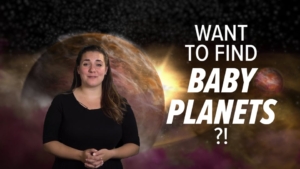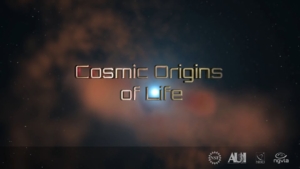

Animated Composite View of SPT0311-58
This animated gif moves through the dust continuum and molecular lines for water and carbon monoxide seen in ALMA observations of the pair of early massive galaxies known as SPT0311-58. This gif begins with a composite combining the dust continuum with molecular lines for H20 and CO. It is followed by the dust continuum seen in red, molecular lines for H20 seen in blue, molecular lines for carbon monoxide, CO(10-9) shown in pinks and deep blue, CO(7-6) shown in magenta, and CO(6-5) shown in purple.
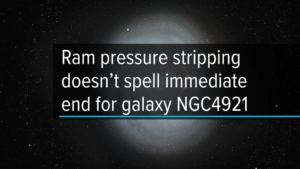
Ram pressure stripping doesn’t spell immediate end for galaxy NGC4921
Viewed face-on, Hubble Space Telescope (HST) reveals the distribution of young stars and dust in the spiral galaxy NGC4921. The galaxy is under ram pressure from its galaxy cluster, the Coma Cluster. This process is stripping gas away from the galaxy, altering its structure and the distribution of molecular gas, as traced by ALMA (seen here in red).
Eventually, ram pressure can strip away enough gas to stop the formation of new stars. The combination of data from HST and ALMA provides a 3-dimensional view of gas distribution and movement in NGC4921. Here we see that some clouds of molecular gas are actually behind the galaxy and falling back towards the host, opposite the direction of ram pressure. This re-accretion of gas can slow the strangulating effect of ram pressure on the life of the galaxy. This is the first observational evidence of the fallback process.
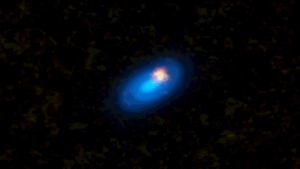
Young Star Elias 2-27 Gas Velocity Emissions
Using gas velocity data, scientists observing Elias 2-27 were able to directly measure the mass of the young star’s protoplanetary disk and also trace dynamical perturbations in the star system. Visible in this animation are the dust continuum 0.87mm emission data (blue), along with emissions from gases C18O (yellow) and 13CO (red).
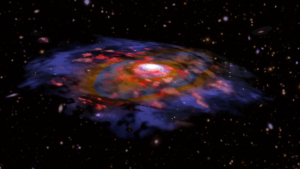
Artist’s animation of a dusty, rotating distant galaxy
Artist’s animation of a galaxy in the early universe that is very dusty and shows the first signs of a rotationally supported disk. In this image, the red color represents gas, and blue/brown represents dust as seen in radio waves with ALMA. Many other galaxies are visible in the background, based on optical data from VLT and Subaru.






